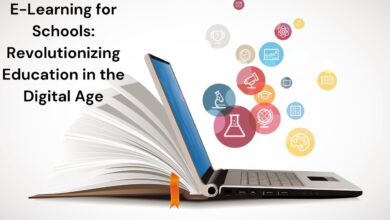How Interactive Panels Can Enhance Teacher-Student Feedback Loops in the Classroom

In the modern classroom, feedback is a powerful tool that helps guide students on their learning journey, providing insights that can boost their understanding and performance. However, traditional feedback methods, such as written notes on assignments or verbal comments in class, can often be slow, impersonal, and disconnected from the moment of learning. Interactive panels, especially interactive flat panels (IFPs), are transforming this process, enabling real-time, dynamic, and engaging feedback loops that enhance the learning experience for both teachers and students.
The Importance of Effective Feedback in Learning
Effective feedback is crucial in education as it helps students identify their strengths, address their weaknesses, and set goals for improvement. Feedback that is timely, specific, and actionable can significantly impact student learning and motivation. However, in many traditional classrooms, the feedback process can be delayed, impersonal, and sometimes confusing, leading to missed learning opportunities. Teachers often struggle with the time it takes to provide individualized feedback, and students may not fully engage with or understand the comments provided.
This gap between feedback and learning moments is where interactive flat panels come into play, offering a unique solution that makes the feedback process immediate, personalized, and engaging.
How Interactive Panels Enhance Feedback Loops
Interactive flat panels are large, touch-enabled displays that combine the functionalities of a computer, whiteboard, and projector into one powerful tool. They are not just about displaying content—they are about interaction, engagement, and immediate response. Here’s how interactive panels enhance feedback loops in the classroom:
- Instant, Visual Feedback: One of the most significant advantages of interactive panels is the ability to provide instant feedback during lessons. For example, during a math lesson, a student can solve a problem on the panel, and the teacher can immediately highlight errors, demonstrate corrections, and provide explanations—all in real-time. This immediate feedback helps students understand mistakes as they happen, allowing them to learn and adjust on the spot. The visual and interactive nature of the feedback makes it more impactful and easier for students to grasp.
- Interactive Quizzes and Polls: Interactive flat panels allow teachers to conduct quick quizzes, polls, and formative assessments during lessons. These activities provide immediate insights into student understanding, enabling teachers to gauge comprehension levels instantly. For instance, a teacher can pose a multiple-choice question on the panel, and students can respond using connected devices or directly on the screen. The results are displayed instantly, allowing the teacher to address misconceptions immediately and adjust the lesson accordingly. This creates a continuous feedback loop that keeps students engaged and helps teachers tailor their instruction to meet the class’s needs.
- Collaborative Annotations and Peer Feedback: Interactive panels facilitate collaborative learning by allowing students to work together on the screen. In group projects, students can present their work on the panel, and both teachers and peers can provide feedback directly on the display. For example, in a language arts class, students might write a paragraph on the interactive panel, and the class can annotate it collectively, suggesting improvements and discussing alternatives. This collaborative feedback process not only enhances learning but also builds critical thinking and communication skills as students learn to give and receive constructive feedback.
- Digital Portfolios and Reflection: Interactive flat panels can be used to create digital portfolios where students’ work is saved, displayed, and reviewed over time. Teachers can use the panel to showcase student progress, highlight areas of improvement, and set goals. For instance, a student’s art project or science report can be displayed on the interactive flat panel, and both the teacher and student can discuss the work in real-time, adding annotations, suggestions, and reflections directly on the screen. This visual reflection process makes feedback more meaningful and personalized, encouraging students to take ownership of their learning.
- Real-Time Editing and Revisions: With interactive flat panels, students can make revisions in real-time based on teacher feedback. During writing assignments or problem-solving activities, students can correct their work immediately on the screen while the teacher provides guidance. For example, in a writing class, students can draft essays on the panel, and teachers can use digital pens to highlight grammar mistakes, suggest sentence restructuring, or add comments. This real-time editing capability turns feedback into an interactive dialogue, making it a natural part of the learning process rather than a separate, delayed task.
- Enhanced Parent-Teacher Communication: Interactive flat panels also serve as valuable tools during parent-teacher meetings. Teachers can display a student’s progress, highlight areas where the student excels, and discuss challenges using visual data and work samples stored on the panel. This approach provides a clear, engaging way to communicate feedback to parents, making discussions about student performance more transparent and understandable.
Read also: Online Private Schools: Revolutionizing Education in the Digital Age
Real-World Applications: Interactive Panels in Action
Several schools have embraced interactive flat panels to enhance feedback loops, with notable success. For example, in a middle school science class, teachers use interactive panels to conduct live experiments with students. During the experiments, students can predict outcomes, record observations directly on the panel, and receive instant feedback on their hypotheses. This real-time interaction makes science tangible and immediate, turning feedback into a powerful learning tool.
In another case, an elementary school reading class uses interactive panels to improve literacy skills. Students read passages aloud and use the panel to highlight difficult words or phrases. Teachers provide instant feedback on pronunciation and comprehension, and students can revise their reading strategies immediately. This interactive approach has led to noticeable improvements in reading fluency and confidence among students.
Conclusion: A New Era of Feedback-Driven Learning
Interactive flat panels are revolutionizing the way feedback is given and received in the classroom. By making feedback immediate, interactive, and visually engaging, these panels create a continuous feedback loop that enhances learning outcomes. They empower teachers to provide timely, specific guidance and enable students to act on feedback in the moment, fostering a more responsive and dynamic learning environment.
As education continues to evolve, the integration of interactive flat panels will play a crucial role in shaping how teachers and students connect, communicate, and collaborate. For schools looking to enhance their feedback processes and create more engaging learning experiences, interactive panels are not just an addition—they are an essential tool for the future of education. By embracing this technology, we can build classrooms where feedback is not just given but lived, making learning more impactful for every student.




